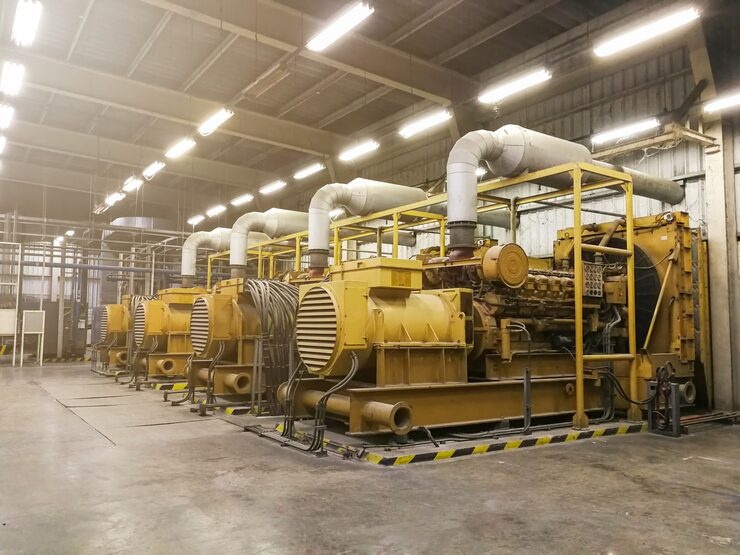Explore Industrial Generators: Complete Guide to Features, Power Solutions & Pro Tips
Industrial generators are large-scale power-producing machines used in settings where uninterrupted electricity is essential. These machines convert mechanical energy into electrical energy and are widely employed in industries such as manufacturing, healthcare, construction, and data centers.
They exist to ensure operations continue smoothly during power outages, in remote locations without access to the main grid, or for facilities with high energy demands. Whether diesel, natural gas, or hybrid-based, industrial generators play a crucial role in modern infrastructure.
Importance
The role of industrial generators has expanded significantly in today's economy. With increasing dependency on continuous power for automation, communication, and manufacturing, any power failure can lead to substantial financial and operational losses.
Who Needs Industrial Generators:
- Manufacturing Plants: For powering machines and ensuring process continuity.
- Hospitals: For life-saving equipment and emergency systems.
- Construction Sites: Especially in remote or developing areas with unstable power.
- Data Centers: For uninterrupted server performance.
- Agricultural Operations: To support irrigation, cold storage, and machinery.
Key Problems They Solve:
- Power Interruptions: Prevent revenue loss and damage during blackouts.
- Remote Access: Enable energy access in non-electrified regions.
- Critical Load Handling: Keep vital systems running, such as HVAC and security.
Without a robust backup system, organizations risk downtime, safety hazards, and loss of data or perishables. Generators offer a dependable solution.
Recent Updates
In the past year, the industrial generator market has evolved with increased focus on sustainability, automation, and fuel efficiency.
Trends from 2024–2025:
- Hybrid and Bi-Fuel Generators: Many industries are adopting generators that run on a mix of diesel and gas or integrate renewable sources.
- Remote Monitoring: IoT-enabled generators allow for real-time diagnostics and performance analytics.
- Eco-Friendly Regulations: Emission standards are pushing manufacturers to design cleaner engines, especially in the U.S., EU, and parts of Asia.
- Increased Demand in Developing Regions: With expanding infrastructure in Africa and South Asia, generator demand has grown by over 10% (source: GlobalData, March 2025).
| Generator Type | Typical Fuel | Best Use Case | Noise Level |
|---|---|---|---|
| Diesel Generator | Diesel | Heavy-duty applications | Moderate–High |
| Gas Generator | Natural Gas/LPG | Eco-sensitive environments | Low–Moderate |
| Hybrid Generator | Diesel + Solar | Sustainable setups | Low |
| Portable Generator | Gasoline | Small or mobile worksites | Moderate |
Laws or Policies
The use and regulation of industrial generators are governed by national and regional laws, especially regarding safety, emissions, and energy efficiency.
India
-
Central Pollution Control Board (CPCB): Sets emission norms for generator sets (latest norms as of July 2023).
- Energy Conservation Act: Encourages use of energy-efficient machinery under the Bureau of Energy Efficiency (BEE).
- State-Level Permits: Some states require noise pollution compliance and site approvals for generators above 125 kVA.
United States
-
EPA Tier 4 Standards: Mandates low-emission engines in non-road applications.
- OSHA Regulations: Cover generator placement, grounding, and operational safety.
- NFPA 110: Standard for Emergency and Standby Power Systems.
Europe
- EU Stage V Emission Norms: Apply to mobile and industrial generators.
- CE Certification: Mandatory for equipment sold in the European Economic Area.
Regulatory compliance ensures environmental safety and helps avoid legal penalties.
Tools and Resources
To simplify the selection, usage, and maintenance of industrial generators, several tools and platforms are available:
Online Tools and Calculators:
- Generator Size Calculator – Cummins or Generac websites
- Load Calculation Tools – Kohler Power Calculator
- Emissions Compliance Checker – EPA.gov Toolkits
Maintenance and Monitoring Apps:
- FG Wilson PowerWizard App
- KOHLER Remote Monitoring
- JCB LiveLink for Generators
Helpful Websites:
- https://www.cpcb.nic.in – Emission norms in India
- https://www.epa.gov – U.S. Environmental Regulations
- https://www.osha.gov – Generator safety standards
- https://www.generatorguide.com – Independent product comparisons
Using these resources can help buyers make informed decisions, monitor performance, and stay compliant with regulations.
FAQs
What size industrial generator do I need?
Generator size depends on your total power load. Use a generator sizing calculator by entering the wattage of all appliances and machinery you need to power. It's best to choose a generator that handles 10–20% more than your peak load.
How often should industrial generators be serviced?
Routine servicing is recommended every 250–500 hours of operation or every 6 months, whichever comes first. This includes checking oil, filters, coolant levels, and testing battery life.
Are diesel generators being phased out due to emissions?
Not entirely. Diesel generators are still widely used due to reliability. However, new regulations are limiting high-emission models, pushing industries to adopt Tier 4-compliant or hybrid alternatives.
Can I use a generator in residential areas?
Yes, but local noise and emission laws apply. In India, for example, CPCB mandates soundproof enclosures and emission filters for gensets above 15 kVA in residential zones.
Is it safe to run generators during rain or floods?
No. Generators must be operated in dry, ventilated spaces. Exposure to water can cause short circuits or electrocution. Use weatherproof enclosures for outdoor installations.
Final Thoughts
Industrial generators are a vital part of modern infrastructure. As technology evolves, today's generators offer not only power security but also smart features and sustainability options. Whether for a factory, hospital, or construction site, choosing the right generator—and ensuring it meets safety and compliance standards—can make a significant difference in operational continuity.
Staying informed about generator types, laws, and tools helps users make reliable and future-proof choices.